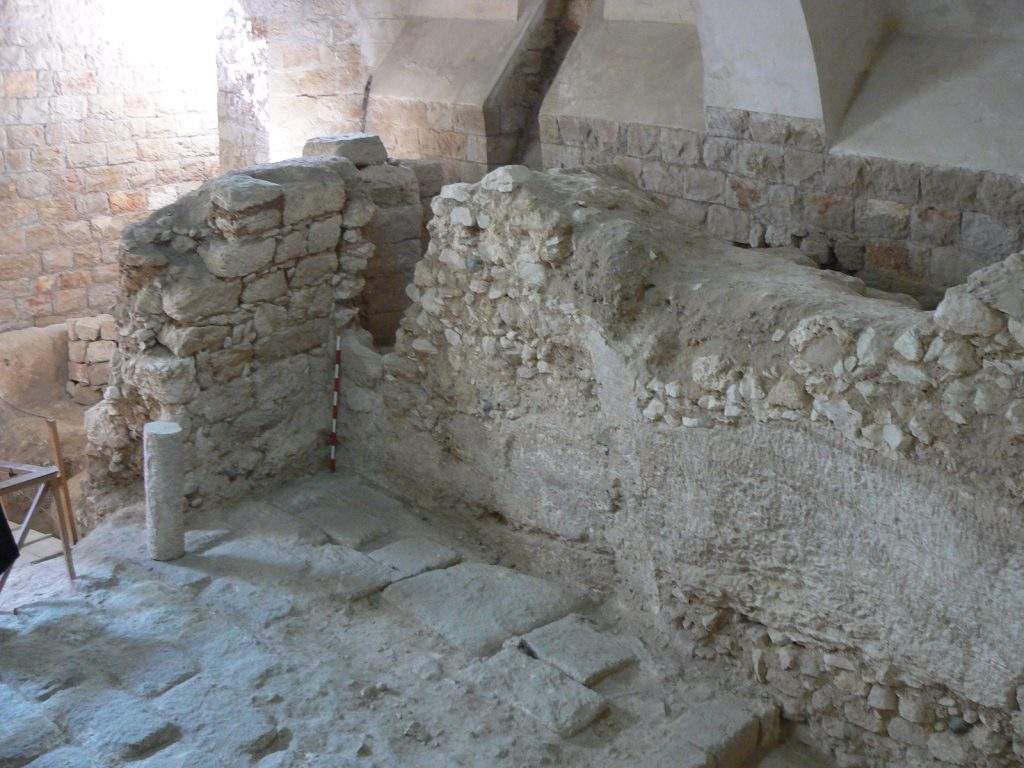We are not certain that the remains of that ancient building in Nazareth, Israel, are indeed the house in which the young Jesus lived , but there is at least a good chance that it is the house that was anciently believed to be so. These are the conclusions reached, after several years of study, by British archaeologist Ken Dark, of the University of Reading, who has just compiled his research into a meaty volume entitled The Sisters of Nazareth Convent. A Roman-period, Byzantine, and Crusader site in central Nazareth, published by Routledge.
The story of the find actually begins in 1881, when some nuns stumbled upon an ancient cistern while construction work on the Sisters of Nazareth Convent was underway. Excavating around the cistern (the nuns, moreover, were the first “archaeologists,” however improvised, to take an interest in the structure, and they collected some objects that later ended up in the convent’s collection) they discovered a building characterized by several layers, a sign that it had been variously modified and used over the centuries. It was the French archaeologist Henri Senès, in the 1930s, who made the first scientific studies of the site. Then the site of the Sisters of Nazareth was not talked about again until 2006, when the Nazareth Archaeological Project, the first professional archaeological expedition to thoroughly excavate the site, was launched.The town of Nazareth, though world-famous for its links to the Gospel story, has actually been rather neglected by archaeological studies.
With the excavations of the Nazareth Archaeological Project, it was discovered that the oldest core of the site is a dwelling carved directly into the rock and dating back to the first century AD (the dating was made possible precisely because of the objects found by the sisters, dating from that period and consistent with a Jewish settlement), but the site was later also used as a quarry, again in Roman times, then as a burial ground, and then again, in Christian times, as a church. According to Dark, the remains of the sacred building may be those of the so-called “Church of the Nutrition,” a temple whose traces had been lost and which had been built in Byzantine times to preserve the remains of what, at that time, was thought to be the place where Jesus grew up. The church is mentioned in a book De Locis Sanctis written in the 7th century by the Irish monk Adamnan of Iona: the volume is an account of his pilgrimage to the Holy Land made in 698. In the 8th century, however, the church was already in ruins, so much so that, three centuries later, the Crusaders, in order to preserve it, built some walls around the structure. It was all in vain, however, because the church was later demolished in the 13th century.
Dark studied for years the site discovered in 1880 by the Sisters of Nazareth and came to the conclusion that those remains are indeed those of the Church of the Nutrition. This is nothing new at all, because back in 2015 Ken Dark published an article in the University of Reading’s Biblical Archaeology Review wondering whether what is included in the church remains was really Jesus’ house: simply now his studies find accommodation in a larger volume. “The church,” the archaeologist told Artnet magazine, “is almost certainly the building described by Adamnanus. It was very large, elaborately decorated, and probably dates to the fifth century. It also includes a crypt, also described in the book. And in the crypt, as Adamnan reports, there are also two graves from the Roman period, and among those graves is a house: that house, Adamnan says, is where Jesus grew up. So, we found the church, we found the crypt, we found the house.”
Of course, we do not have mathematical certainty that that is indeed Jesus’ house: back in 2015, Dark wrote that “it is impossible to establish on archaeological grounds” that that is indeed the dwelling of the little Messiah. “On the other hand,” Dark added, “there are also no good archaeological reasons on the basis of which we can refute this identification. What we can say is that this building is probably the one where the builders of the Byzantine church believed that Jesus spent his childhood in Nazareth.” In the 284-page Routledge book, Dark traces the history of the excavation of the known site named after the Sisters of Nazareth, describes the studies conducted by the Nazareth Archaeological Project in 2006, and summarizes the history of the church and the house believed by the ancient fourth-century Byzantines to be that of the baby Jesus.
Pictured is the structure believed to be the home of Jesus.
 |
| Nazareth, British archaeologist: according to the ancients, this building was Jesus' home |
Warning: the translation into English of the original Italian article was created using automatic tools. We undertake to review all articles, but we do not guarantee the total absence of inaccuracies in the translation due to the program. You can find the original by clicking on the ITA button. If you find any mistake,please contact us.